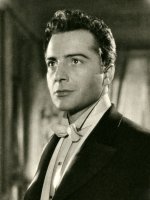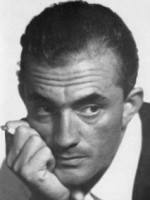Lotte Reiniger is a Director, Scriptwriter, Assistant Director and Animation Allemande born on 2 june 1899 at Charlottenburg (German)
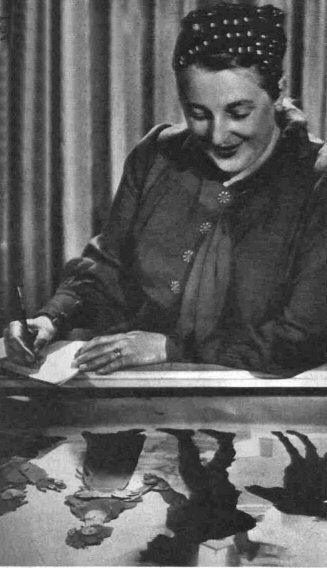
Charlotte "Lotte" Reiniger (2 June 1899 – 19 June 1981) was a German silhouette animator and film director.
Lotte Reiniger was born in Berlin-Charlottenburg on 2 June 1899. As a child, she was fascinated with the Chinese art of silhouette puppetry, even building her own puppet theatre, so that she could put on shows for her family and friends.
As a teenager, Reiniger fell in love with cinema, first with the films of Georges Méliès for their special effects, then the films of actor and director Paul Wegener, known today for The Golem (1920). In 1915, she attended a lecture by Wegener that focused on the fantastic possibilities of animation.
Reiniger eventually convinced her parents to allow her to enroll in the acting group Wegener belonged to, the Theatre of Max Reinhardt. She started making silhouette portraits of the various actors around her, and soon she was making elaborate title cards for Wegener's films, many of which featured her silhouettes.
Adulthood and success
In 1918, Reiniger animated wooden rats and created the animated intertitles for Wegener's Der Rattenfänger von Hameln (The Pied Piper of Hamelin). The success of this work got her admitted into the Institut für Kulturforschung (Institute for Cultural Research), an experimental animation and shortfilm studio. It was here that she met her future creative partner and husband (from 1921), Carl Koch, as well as other avant-garde artists including Hans Cürlis, Bertolt Brecht, Berthold Bartosch.
The first film Reiniger directed was Das Ornament des verliebten Herzens (The Ornament of the Enamoured Heart, 1919), a short piece involving two lovers and an ornament that reflects their moods. The film was very well received.
She made six short films during the following few years, all produced and photographed by her husband. These were interspersed with advertising films (the Julius Pinschewer advertising agency invented ad films and sponsored a large number of abstract animators during the Weimar period) and special effects for various feature films – most famously a silhouette falcon for a dream sequence in Part One of Fritz Lang's Die Nibelungen). During this period she became the centre of a large group of ambitious German animators, including Bartosch, Hans Richter, Walter Ruttmann and Oskar Fischinger.
In 1923, she was approached by Louis Hagen, who had bought a large quantity of raw film stock as an investment to fight the spiraling inflation of the period, who asked her to do a feature length animated film. The result was The Adventures of Prince Achmed, completed in 1926, one of the first animated feature films, with a plot that is a pastiche of stories from One Thousand and One Nights. Although it failed to a find a distributor for almost a year, once premiered in Paris (thanks to the support of Jean Renoir), it became a critical and popular success.
Reiniger anticipated Walt Disney and Ub Iwerks by a decade, by devising the first multi-plane camera for certain effects. In addition to Reiniger's silhouette actors, Prince Achmed boasted dream-like backgrounds by Walter Ruttmann (her partner in the Die Nibelungen sequence) and a symphonic score by Wolfgang Zeller. Additional effects were added by Carl Koch and Berthold Bartosch.
Following the success of Prince Achmed, Reiniger was able to make a second feature. Doktor Dolittle und seine Tiere (Doctor Dolittle and his Animals, 1928) was based on the first of the English children's books by Hugh Lofting. The film tells of the good Doctor's voyage to Africa to help heal sick animals. It is currently available only in a television version with new music, voice-over narration and the images playing at too many frames per second (fps) .The score of this three-part film was composed by Kurt Weill, Paul Hindemith and Paul Dessau.
A year later, Reiniger co-directed her first live-action film with Rochus Gliese, Die Jagd nach dem Glück (The Pursuit of Happiness, 1929), a tale about a shadow-puppet troupe. The film starred Jean Renoir and Bertold Bartosch and included a 20-minute silhouette performance by Reiniger. Unfortunately, the film was completed just as sound came to Germany and release of the film was delayed until 1930 to dub in voices by different actors – the result being so unsuccessful as to ruin any enjoyment of the film.
Reiniger attempted to make a third animated feature, inspired by Maurice Ravel's opera L'enfant et les sortilèges (The Child and the Bewitched Things, 1925), but was unable to clear all of the individual rights to Ravel's music, Colette's libretto and an unexpected number of copyright holders. When Ravel died in 1937 the clearance became even more complex and Lotte finally abandoned the project, although she had designed sequences and animated some scenes to convince potential backers and the rights-holders.
She worked with British poet, critic and musician Eric Walter White on several films and he wrote the early book-length essay on her work – Walking Shadows: An Essay on Lotte Reiniger's Silhouette Films, (London: Leonard and Virginia Woolf, 1931).
Flight from Germany and later life
With the rise of the Nazi Party, Reiniger and Koch decided to emigrate (both were involved in left-wing politics), but found that no other country would give them permanent visas. As a result, the couple spent the years 1933–1944 moving from country to country, staying as long as visas would allow. They cooperated with Jean Renoir in Paris and Luchino Visconti in Rome. Somehow, they managed to make 12 films during this period, the best-known being Carmen (1933) and Papageno (1935), both based on popular operas (Bizet's Carmen and Mozart's Die Zauberflöte). When World War II commenced they stayed with Visconti in Rome until 1944, then moved back to Berlin.
In 1949, Reiniger and Koch moved to London, where she made a few short advertising films for the Ground Film Unit and John Grierson's General Post Office Film Unit. While she was living in London in the early 1950s she became friends with "Freddie" Bloom, who was the first director of the National Deaf Children's Society and asked her to design a logo for the new charity. Reiniger responded by cutting out four children running up a hill. Bloom was amazed at her skill with the scissors – in a few moments she created about four different silhouettes of the children from black paper. The logo was used until the 1990s, when a design company was invited to revamp it. The result was a very minor modification, but this new design was dropped a few years later.
With Louis Hagen Jr. (the son of Reiniger's financier of Prince Achmed in Potsdam), they founded Primrose Productions in 1953 and, over the next two years, produced more than a dozen short silhouette films based on Grimms' Fairy Tales for BBC and Telecasting America. Reiniger also provided illustrations for the 1953 book King Arthur and His Knights of the Round Table by Roger Lancelyn Green.
Reiniger was awarded the Filmband in Gold of the Deutscher Filmpreis in 1972; in 1979 she received the Great Cross of the Order of Merit of the Federal Republic of Germany. Reiniger died in Dettenhausen, Germany, on 19 June 1981, at the age of 82.
Source : Wikidata
Lotte Reiniger

Birth name Charlotte Reiniger
Nationality German
Birth 2 june 1899 at Charlottenburg (German)
Death 19 june 1981 (at 82 years) at Dettenhausen (German)
Awards Grand Merit Cross of the Order of Merit of the Federal Republic of Germany
Nationality German
Birth 2 june 1899 at Charlottenburg (German)
Death 19 june 1981 (at 82 years) at Dettenhausen (German)
Awards Grand Merit Cross of the Order of Merit of the Federal Republic of Germany
Biography
Early lifeLotte Reiniger was born in Berlin-Charlottenburg on 2 June 1899. As a child, she was fascinated with the Chinese art of silhouette puppetry, even building her own puppet theatre, so that she could put on shows for her family and friends.
As a teenager, Reiniger fell in love with cinema, first with the films of Georges Méliès for their special effects, then the films of actor and director Paul Wegener, known today for The Golem (1920). In 1915, she attended a lecture by Wegener that focused on the fantastic possibilities of animation.
Reiniger eventually convinced her parents to allow her to enroll in the acting group Wegener belonged to, the Theatre of Max Reinhardt. She started making silhouette portraits of the various actors around her, and soon she was making elaborate title cards for Wegener's films, many of which featured her silhouettes.
Adulthood and success
In 1918, Reiniger animated wooden rats and created the animated intertitles for Wegener's Der Rattenfänger von Hameln (The Pied Piper of Hamelin). The success of this work got her admitted into the Institut für Kulturforschung (Institute for Cultural Research), an experimental animation and shortfilm studio. It was here that she met her future creative partner and husband (from 1921), Carl Koch, as well as other avant-garde artists including Hans Cürlis, Bertolt Brecht, Berthold Bartosch.
The first film Reiniger directed was Das Ornament des verliebten Herzens (The Ornament of the Enamoured Heart, 1919), a short piece involving two lovers and an ornament that reflects their moods. The film was very well received.
She made six short films during the following few years, all produced and photographed by her husband. These were interspersed with advertising films (the Julius Pinschewer advertising agency invented ad films and sponsored a large number of abstract animators during the Weimar period) and special effects for various feature films – most famously a silhouette falcon for a dream sequence in Part One of Fritz Lang's Die Nibelungen). During this period she became the centre of a large group of ambitious German animators, including Bartosch, Hans Richter, Walter Ruttmann and Oskar Fischinger.
In 1923, she was approached by Louis Hagen, who had bought a large quantity of raw film stock as an investment to fight the spiraling inflation of the period, who asked her to do a feature length animated film. The result was The Adventures of Prince Achmed, completed in 1926, one of the first animated feature films, with a plot that is a pastiche of stories from One Thousand and One Nights. Although it failed to a find a distributor for almost a year, once premiered in Paris (thanks to the support of Jean Renoir), it became a critical and popular success.
Reiniger anticipated Walt Disney and Ub Iwerks by a decade, by devising the first multi-plane camera for certain effects. In addition to Reiniger's silhouette actors, Prince Achmed boasted dream-like backgrounds by Walter Ruttmann (her partner in the Die Nibelungen sequence) and a symphonic score by Wolfgang Zeller. Additional effects were added by Carl Koch and Berthold Bartosch.
Following the success of Prince Achmed, Reiniger was able to make a second feature. Doktor Dolittle und seine Tiere (Doctor Dolittle and his Animals, 1928) was based on the first of the English children's books by Hugh Lofting. The film tells of the good Doctor's voyage to Africa to help heal sick animals. It is currently available only in a television version with new music, voice-over narration and the images playing at too many frames per second (fps) .The score of this three-part film was composed by Kurt Weill, Paul Hindemith and Paul Dessau.
A year later, Reiniger co-directed her first live-action film with Rochus Gliese, Die Jagd nach dem Glück (The Pursuit of Happiness, 1929), a tale about a shadow-puppet troupe. The film starred Jean Renoir and Bertold Bartosch and included a 20-minute silhouette performance by Reiniger. Unfortunately, the film was completed just as sound came to Germany and release of the film was delayed until 1930 to dub in voices by different actors – the result being so unsuccessful as to ruin any enjoyment of the film.
Reiniger attempted to make a third animated feature, inspired by Maurice Ravel's opera L'enfant et les sortilèges (The Child and the Bewitched Things, 1925), but was unable to clear all of the individual rights to Ravel's music, Colette's libretto and an unexpected number of copyright holders. When Ravel died in 1937 the clearance became even more complex and Lotte finally abandoned the project, although she had designed sequences and animated some scenes to convince potential backers and the rights-holders.
She worked with British poet, critic and musician Eric Walter White on several films and he wrote the early book-length essay on her work – Walking Shadows: An Essay on Lotte Reiniger's Silhouette Films, (London: Leonard and Virginia Woolf, 1931).
Flight from Germany and later life
With the rise of the Nazi Party, Reiniger and Koch decided to emigrate (both were involved in left-wing politics), but found that no other country would give them permanent visas. As a result, the couple spent the years 1933–1944 moving from country to country, staying as long as visas would allow. They cooperated with Jean Renoir in Paris and Luchino Visconti in Rome. Somehow, they managed to make 12 films during this period, the best-known being Carmen (1933) and Papageno (1935), both based on popular operas (Bizet's Carmen and Mozart's Die Zauberflöte). When World War II commenced they stayed with Visconti in Rome until 1944, then moved back to Berlin.
In 1949, Reiniger and Koch moved to London, where she made a few short advertising films for the Ground Film Unit and John Grierson's General Post Office Film Unit. While she was living in London in the early 1950s she became friends with "Freddie" Bloom, who was the first director of the National Deaf Children's Society and asked her to design a logo for the new charity. Reiniger responded by cutting out four children running up a hill. Bloom was amazed at her skill with the scissors – in a few moments she created about four different silhouettes of the children from black paper. The logo was used until the 1990s, when a design company was invited to revamp it. The result was a very minor modification, but this new design was dropped a few years later.
With Louis Hagen Jr. (the son of Reiniger's financier of Prince Achmed in Potsdam), they founded Primrose Productions in 1953 and, over the next two years, produced more than a dozen short silhouette films based on Grimms' Fairy Tales for BBC and Telecasting America. Reiniger also provided illustrations for the 1953 book King Arthur and His Knights of the Round Table by Roger Lancelyn Green.
Reiniger was awarded the Filmband in Gold of the Deutscher Filmpreis in 1972; in 1979 she received the Great Cross of the Order of Merit of the Federal Republic of Germany. Reiniger died in Dettenhausen, Germany, on 19 June 1981, at the age of 82.
Usually with
Filmography of Lotte Reiniger (4 films)
Director
 , 1h5
, 1h5Directed by Lotte Reiniger, Carl Koch
Genres Drama, Science fiction, Fantasy, Adventure, Animation, Romance
Themes Children's films
Rating77%





An African magician (der afrikanische Zauberer) conjures up a flying horse, which he shows to the Caliph. When the magician refuses to sell it for any amount of gold, the Caliph offers any treasure he has. The magician chooses Dinarsade, the Caliph's daughter, to her great distress. Prince Achmed, Dinarsade's brother, objects, but the magician persuades him to try out the horse. It carries the prince away, higher and higher into the sky, as he does not know how to control it. The Caliph has the magician imprisoned.
Scriptwriter

Girl of the Golden West (1942)
, 1h25Directed by Carl Koch
Origin Italie
Genres Drama, Western, Spaghetti Western
Actors Michel Simon, Isa Pola, Rossano Brazzi, Valentina Cortese, Carlo Duse, Cesare Fantoni
Rating60%





Arianna, an Italian actress, joins a caravan heading into the American West with her companion Diego. Diego is eventually killed by a local villain. Arianna falls in love with the villain without realising that he is the murderer.
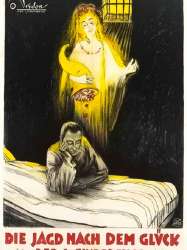
The Pursuit of Happiness (1930)
, 1h32Directed by Rochus Gliese
Genres Drama
Actors Catherine Hessling, Berthold Bartosch, Alexander Murski, Jean Renoir, Hilde Körber, Hans Rehmann
Roles Writer
Rating72%





 , 1h5
, 1h5Directed by Lotte Reiniger, Carl Koch
Genres Drama, Science fiction, Fantasy, Adventure, Animation, Romance
Themes Children's films
Rating77%





An African magician (der afrikanische Zauberer) conjures up a flying horse, which he shows to the Caliph. When the magician refuses to sell it for any amount of gold, the Caliph offers any treasure he has. The magician chooses Dinarsade, the Caliph's daughter, to her great distress. Prince Achmed, Dinarsade's brother, objects, but the magician persuades him to try out the horse. It carries the prince away, higher and higher into the sky, as he does not know how to control it. The Caliph has the magician imprisoned.
Direction
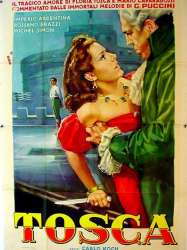
La Tosca (1941)
, 1h45Directed by Jean Renoir, Carl Koch
Origin Italie
Genres Drama, Musical
Actors Imperio Argentina, Rossano Brazzi, Michel Simon, Adriano Rimoldi, Carla Candiani, Olga Vittoria Gentilli
Roles Assistant Director
Rating64%





Rome, juin 1800. Alors que l’issue de la bataille de Marengo est encore incertaine le comte Palmieri est exécuté sur la terrasse du château Saint-Ange. Un autre jacobin, Angelotti, est libéré par ses compagnons mais, ne pouvant passer les portes de la ville, il se réfugie, avec l’aide sa soeur, la marquise Attavanti, dans la chapelle familiale à Sant’Andrea della Valle où Mario Cavaradossi est en train de peindre une Madone en s’inspirant des traits de la marquise qui vient régulièrement prier dans l’église. Cette ressemblance suscite la jalousie de son amante Tosca, célèbre cantatrice qui doit chanter le soir même lors d’un concert devant la reine et vient voir le peintre entre deux répétitions avec le Maestro Paisiello. Cavaradossi parvient à cacher Angelotti dans sa villa hors les murs mais Scarpia, chef de la police secrète, espère utiliser la jalousie de Tosca pour retrouver les traces du fugitif.
Visual effects
 , 1h5
, 1h5Directed by Lotte Reiniger, Carl Koch
Genres Drama, Science fiction, Fantasy, Adventure, Animation, Romance
Themes Children's films
Roles Animation
Rating77%





An African magician (der afrikanische Zauberer) conjures up a flying horse, which he shows to the Caliph. When the magician refuses to sell it for any amount of gold, the Caliph offers any treasure he has. The magician chooses Dinarsade, the Caliph's daughter, to her great distress. Prince Achmed, Dinarsade's brother, objects, but the magician persuades him to try out the horse. It carries the prince away, higher and higher into the sky, as he does not know how to control it. The Caliph has the magician imprisoned.
 Connection
Connection


